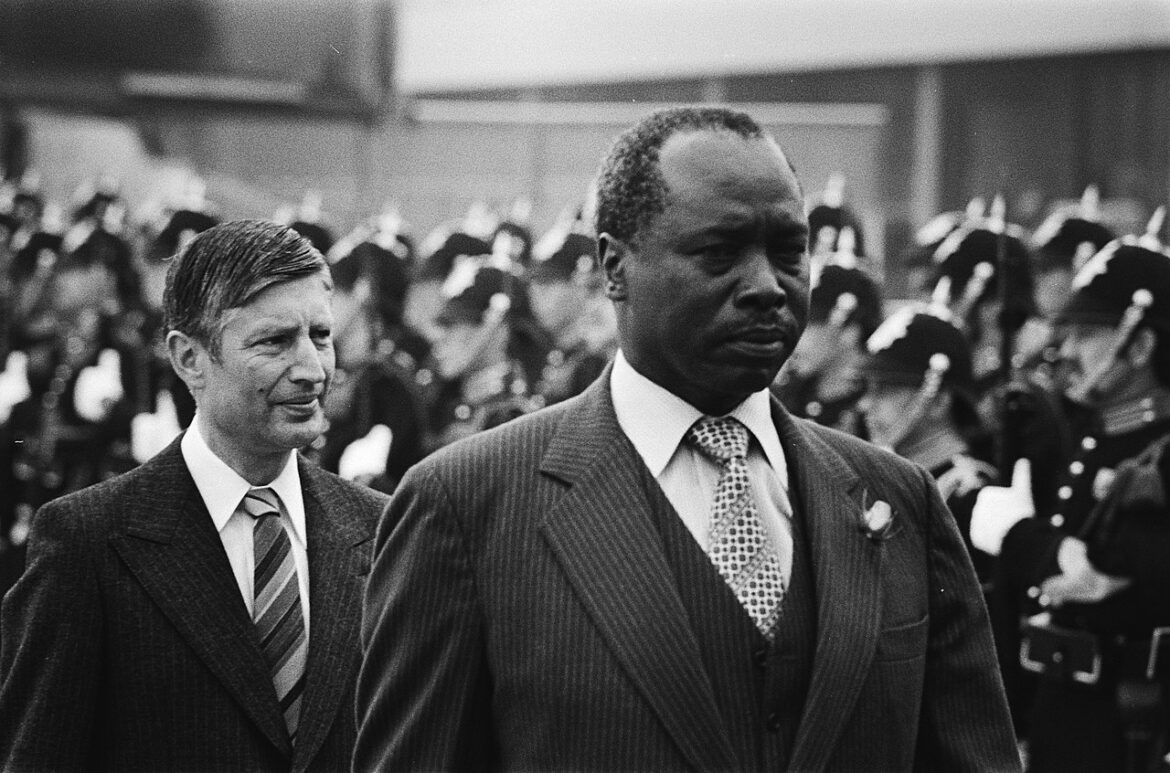Kenya’s economic landscape has undergone a profound transformation over the past few decades, marked by a significant decline in its industrial base. This de-industrialization, driven by World Bank and International Monetary Fund (IMF) Structural Adjustment Programs (SAPs) introduced in the 1980s and 1990s, was exploited by the Daniel Arap Moi regime as a pretext to raid public utility companies and state-owned corporations, converting them into private assets.
These policies, presented as economic reforms, prioritized privatization, trade liberalization, and reduced government spending, but in practice, they facilitated the transfer of national wealth to elites and foreign entities, crippling local industries, causing widespread job losses, retrenchments, and fueling migration.
This article explores how SAPs, under the guise of modernization, enabled the dismantling of Kenya’s industrial framework, focusing on the privatization of key entities like Kenya Power and Lighting Company (KPLC), Telkom (Safaricom), and Kenya Airways.
Structural Adjustment Programs: A Blueprint for De-Industrialization
Introduced in the 1980s, SAPs were conditions imposed by the World Bank and IMF to secure loans for Kenya, which was grappling with economic stagnation and debt. These programs mandated privatization of state-owned enterprises, deregulation of markets, and cuts to public spending, ostensibly to enhance efficiency and stimulate growth. However, in Kenya, they served as a cover for systemic asset-stripping, particularly under the Moi regime (1978–2002), which capitalized on the privatization push to enrich political allies and foreign investors.
The World Bank and IMF’s insistence on an import-dependent economy undermined local manufacturing and agriculture. By prioritizing export-led growth and foreign investment, SAPs flooded Kenya’s market with cheap imports, making it nearly impossible for domestic industries to compete. This aligns with scholarly analyses, who argue that SAPs across Africa dismantled industrial capacities to sustain Western economies by ensuring African markets remained open to their goods. In Kenya, this agenda was executed with precision, as the Moi government used privatization to transfer valuable public assets to private hands, often without transparent processes or reinvestment in industrial development.
Privatization as Plunder: The Case of KPLC, Telkom, and Kenya Airways
The privatization of state-owned enterprises under SAPs was a cornerstone of Kenya’s de-industrialization, with KPLC, Telkom (Safaricom), and Kenya Airways serving as prime examples of how public assets were raided. These entities, once pillars of Kenya’s economy, were systematically dismantled or repurposed, leading to inefficiencies, job losses, and reduced industrial capacity.
Kenya Power and Lighting Company (KPLC): KPLC, responsible for electricity distribution, was partially privatized in the 1990s as part of SAP-driven reforms. While the government retained majority ownership, private investors gained significant stakes, and management was restructured to align with market-oriented principles. However, this led to inefficiencies and profiteering, with reports of inflated consumer bills undermining industrial competitiveness. High energy costs deterred manufacturing investments, contributing to factory closures and layoffs. A 2020 Kenya Institute for Public Policy Research and Analysis (KIPPRA) report notes that unreliable and expensive electricity has been a major barrier to industrial growth, with Kenya’s manufacturing sector stagnating at 7-8% of GDP since the 1990s, down from 13% in the 1970s.
Telkom (Safaricom): Telkom Kenya, once a state-owned telecommunications monopoly, was privatized in the late 1990s and early 2000s, with Safaricom – its mobile subsidiary – becoming a flagship case. Under SAP pressure, Telkom’s assets were sold off, with Safaricom transitioning to private ownership, primarily benefiting foreign investors like Vodafone and local elites connected to the Moi regime. By 2009, the government’s stake in Safaricom had dwindled to a minority share, stripping the state of a revenue-generating asset. This privatization enriched a select few but did little to foster broader industrial development, as telecommunications profits were not reinvested into manufacturing or infrastructure.
Kenya Airways: Kenya Airways, once a symbol of national pride, faced privatization pressures in the 1990s, with the government reducing its stake and KLM acquiring significant shares. The Moi regime’s mismanagement and SAP-driven reforms led to financial distress, with allegations of asset-stripping and corruption. By the 2000s, the airline was struggling, shedding jobs and routes, a far cry from its former status as a regional leader. The privatization process, as documented by Pitcher (2007), exemplifies how SAPs enabled the transfer of public assets to private entities without ensuring long-term economic benefits for Kenya.
Other state-owned enterprises, such as agricultural marketing boards for coffee, tea, and sugar, were dismantled or privatized, further weakening Kenya’s industrial base. The sugar industry, for instance, was deliberately undermined to favor imports from Brazil, while coffee farmers faced reforms that prioritized foreign interests, reducing their global competitiveness. These actions not only eroded industrial capacity but also destroyed livelihoods, pushing rural communities into poverty.
Socioeconomic Consequences: Job Losses, Retrenchments, and Migration
The de-industrialization driven by SAPs and Moi’s privatization schemes had profound socioeconomic impacts. The collapse of manufacturing and agriculture led to significant job losses, particularly in sectors like textiles, sugar, and coffee processing, which were once labor-intensive. The stagnation of manufacturing, as noted in the 2020 KIPPRA report, meant fewer formal jobs, with the sector unable to absorb Kenya’s growing workforce. A 2023 World Bank report estimates Kenya’s unemployment rate at 5.7%, but youth unemployment, at 13%, reflects the acute lack of opportunities, exacerbated by underemployment in the informal sector.
Retrenchments became commonplace as privatized entities like KPLC and Kenya Airways streamlined operations to maximize profits, often at the expense of workers. The high cost of electricity and unreliable services further discouraged industrial investment, leading to factory closures and additional layoffs. This economic squeeze pushed many Kenyans to seek opportunities abroad, resulting in a brain drain and reliance on diaspora remittances. Central Bank of Kenya data (2024) shows remittances reached $4.2 billion in 2023, surpassing traditional exports like tea and coffee, highlighting the economy’s shift from production to external dependency. The International Organization for Migration (2022) notes that economic necessity drives Kenyan migration, with professionals flocking to the Gulf, Europe, and North America, leaving behind a skills gap that further hampers industrial recovery.
Corruption and Governance: Complicity in Asset-Stripping
Corruption under the Moi regime amplified the destructive impact of SAPs, as privatization became a vehicle for elite enrichment. Public assets were sold at undervalued prices to politically connected individuals or foreign firms, with little accountability. A Transparency International report (2023) ranks Kenya 126th out of 180 countries in corruption perception, underscoring how embezzlement and mismanagement have undermined economic development. The Moi government’s complicity in this process ensured that privatization proceeds were not reinvested into industries but instead siphoned off, perpetuating a cycle of debt and dependency.
The World Bank and IMF’s role in this process cannot be overlooked. By continuing to lend despite evident corruption, these institutions implicitly endorsed the Moi regime’s actions. Loans were often misappropriated, with no tangible projects to show for billions borrowed, yet the debt burden was passed onto Kenyan taxpayers. This dynamic kept Kenya tethered to a cycle of borrowing, with interest payments draining resources that could have revitalized industries.
A Path Forward: Reclaiming Economic Sovereignty
Reversing Kenya’s de-industrialization requires a multifaceted approach, starting with a rejection of the import-driven model perpetuated by World Bank and IMF policies. Policymakers must prioritize incentives for local manufacturers and farmers, such as tax breaks and subsidies, to revive sectors like sugar, coffee, and textiles. The African Development Bank (2021) emphasizes the potential of devolution to foster local economic growth, but this requires transparent management of funds to ensure they support industrial projects rather than elite enrichment.
Strengthening governance is critical. Anti-corruption measures, including forensic audits and asset recovery, can reclaim misappropriated wealth and deter future plunder. Civic participation and grassroots activism, offer a blueprint for holding leaders accountable and demanding industrial-focused policies.
Finally, Kenya must invest in education and skills development to rebuild its industrial workforce. The current curriculum, criticized for producing graduates unfit for modern industries, needs reform to emphasize innovation and productivity, countering the legacy of SAP-driven policies that prioritized compliance over creativity. This can only be done by a new government free from the old generation of boomers who are inordinately-obsessed and numbingly-enamored by whiteness or colonial brainwash mechanisms.
Conclusion
The de-industrialization of Kenya, catalyzed by World Bank and IMF Structural Adjustment Programs, was a cover for the Moi regime to raid public utilities and state-owned corporations like KPLC, Telkom (Safaricom), and Kenya Airways. These privatizations enriched elites and foreign investors while dismantling Kenya’s industrial base, leading to job losses, retrenchments, and mass migration. The legacy of these policies persists, with corruption and governance failures perpetuating economic dependency. To reclaim its industrial potential, Kenya must prioritize local production, strengthen governance, and empower citizens through activism and education. Only by addressing these root causes can the nation break free from the shackles of SAPs and build a self-sufficient economy.
There is no shortcut. Occupying StateHouse and executing the Ruto Must Go agenda to its logical conclusion is our pathway to economic liberation in the country. No more distractions and delays.

